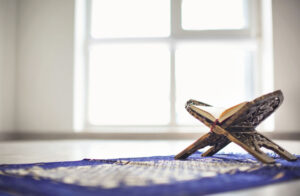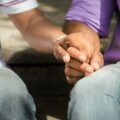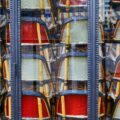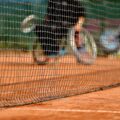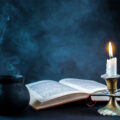Queer Muslims: Finding a place through literature
Queer Muslims: Finding a place through literature
Expressing faith or queerness is often tricky. Literature is a means for queer Muslims to assert themselves. Their stories participate in the written traditions of the ‘religions of the Book’, while questioning our whole societies.
Judaism, Christianity, and Islam are ‘religions of the book’. Their sacred stories are the medium through which believers reach to God. Reading and interpreting these stories is crucial to try and understand God’s intentions towards humanity. One of these common stories is that of Sodom and Gomorrah. In ancient times, it tells, the inhabitants of the city of Sodom raped foreigners they were supposed to host. Finding out about this, God destroyed the city to punish this assault. The three religions of the book long interpreted God’s wrath as a prohibition of homosexuality.[1]
Such stories in the sacred realm shape communities and lives. Those who are affected, in turn, put pen to paper. By telling their own stories, they undertake a profane effort to accommodate religion and intimacy. The publication of their work can cause secular and sacred representations of love and sexuality to face one another, leading to open debate. This is precisely what happened in France, after Fatima Daas released her first novel La petite dernière in August 2020.[2]
Asserting complex identities in autofictions
Daas navigates clashing identities. She is a French woman born to an immigrant Algerian family, a practicing Muslim and a lesbian, and a writer who grew up in a lower social class. While promoting her autobiographical novel, she insisted on the core message of her book: she would not choose between the diverging parts of herself.
“Society, our friends and even our family push us to choose. You have to make a stand, to cleave. I have decided to give none of my identities up, and assume them in their contradictions.”[3]
In its political context, this pledge was a bit of a shock. Universalism being the foundation of the French Republic, particular belongings to any kind of community is to be kept private rather than publicly exposed.[4] Daas soon drew even more attention to her stance. When asked about the similarity between her character’s internalised homophobia and her own take on homosexuality, she replied she had no intention to amend Islam or construe it as authorising homosexuality. As a Muslim, she stands by the interpretation that regards homosexuality as a sin.[5] In the meantime, she aims at complexity rather than perfection. She therefore persists as a lesbian and keeps her relationship with God a priority.[6]
From a theological point of view, none of this is surprising. Based on Sodom and Gomorrah’s story, the vast majority of Islamic jurisprudence indeed declares homosexuality a sin.[7] From a sociological point of view however, the discomfort that followed is understandable. In France, public homophobic discourse is punishable by a year of imprisonment and a €45,000 fine.[8] Questions rose: is homophobia also punishable by the law, if it stems from a gay person? Can the plain statement of a (contentious) religious consensus be considered an infringement to the law? Should artists not tend to challenge the traditional interpretations of sacred texts?[9] The organisation Les mille et unes Queer, gathering lesbians with an immigrant background, worried that Muslim lesbians would become even more alienated. Representation of female homosexuality is scarce, they say, but representation of female homosexuality in religious contexts is almost non-existent; so it had better be positive and affirming.[10]
Unifying faith and sexual orientation in fiction
The young author is not the first Muslim to try conciliating her faith and her love life. Sociologist Jean Zaganiaris provides a history of homosexuality in Franco-Moroccan literature.[11] He notes that a first-person account of homosexuality was not published until 1995. Writing his autobiography, Rachid O. described his thriving as a gay man, while identifying as Muslim.[12] Unlike Daas, Rachid O. did not endorse the mainline Muslim take on homosexuality. As Zaganiaris puts it, religion was mostly ethics and a shared way of life to the male author.[13]
From the 2000s on, books featuring homosexual characters of Muslim faith began to be published in Morroco. The possibility to voice their stories in their countries of origin sparked activism in artists. Authors like Abdellah Taïa and Hicham Tahir worked to debunk common misconceptions about homosexuality in Maghreb. They rejected the culturalist argument which posits homosexuality as neocolonial “gay imperialism.” To them, the diversity of homosexual practices testifies to their autonomy from one specific Western culture.[14] Bahaa Trabelsi is rather representative of this movement. As a writer and a journalist, she continually insisted on the different ways to experience one’s sexuality as a queer Muslim. Her 2014 short story tackled the mutual attraction between two women.[15] Hanane, wearing a headscarf, and Sanae, dressed in Western fashion, represent the two sides of a “schizophrenic Morocco.” Their relationship progressively blurs the distinction between “Western culture” where sexuality is deemed liberal and permissive, and an “Eastern” or “Muslim culture” where sexuality is assumed to be censored and forbidden.[16]
Addressing religious-based homophobia remains difficult, though necessary. After three Moroccan men were imprisoned for homosexuality in 2015, Taïa argued that Islam and homosexuality are not mutually exclusive. In the newsmagazine TelQuel, he wrote:
“To justify their condemnation of homosexuality, some (most of them actually) conjure up Islam, the Quran, our traditions. (…) To those, I want to answer; the Quran acknowledges forgiveness, Islam prompts to never hasten the judgment of another and our traditions themselves have a gentle heart for us, all, absolutely all.”[17]
Many stories inform the grand narrative
Whether they aim to claim the contradictions between being Muslim and homosexual, or to unify theses identities in one narrative, fictions written by queer Muslims involve more than just their authors. They prompt social and religious discussions, if not change.
These queer writers of faith take it upon themselves to bridge different – and often opposing – value systems. The bare fact that they can achieve this questions our cultures: how spiritual can queerness be? And how queer can religion get? Reading them, it becomes clear that much is left to discuss and write about. Although profane, these stories indeed contribute to the development of the religions of the book.
Interested in similar topics? Go to our Dashboard and get free updates.
[1] Christopher van der Krogt, Friday essay: The Qur’an, the Bible and homosexuality in Islam, The Conversation, 16/06/16, Friday essay: The Qur’an, the Bible and homosexuality in Islam
[2] Fatima Daas, La petite dernière, Editions Noir et Blanc, 2020
[3] Radio Broadcast, 02/10/20, “J’ai décidé de ne renoncer à aucune de mes identités” : dans “La petite dernière”, Fatima Daas se revendique lesbienne, musulmane et banlieusarde
[4] “France shall be an indivisible, secular, democratic and social Republic. It shall ensure the equality of all citizens before the law, without distinction of origin, race or religion.”, Constitution of the Fifth Republic, Preamble, 1958
[5] Radio Broadcast, 07/09/20, Fatima Daas : “J’avais pas envie de faire un journal intime, mais de la littérature”
[6] Newspaper interview, 20/08/20, Fatima Daas : « La relation avec Dieu est beaucoup plus forte que celle que je peux avoir avec une fille »
[8] Agressions verbales et diffamation
[9] Online press report, 17/09/2020, Fatima Daas: «Je voulais raconter comment on se construit en se rejetant soi-même»
[10] Online press report, 17/09/2020, Fatima Daas: «Je voulais raconter comment on se construit en se rejetant soi-même»
[11] Jean Zaganiaris, Sexe, mensonges et littérature : la place des homosexualités et des islamités dans les productions littéraires marocaines, Dir Rémy Bethmont, Martine Gross, Homosexualité et traditions monothéistes. Vers la fin d’un antagonisme ?, Editions Labor et Fides, 2017
[12] Rachid O., L’enfant ébloui, Editions Gallimard, 1995
[13] Jean Zaganiaris, Sexe, mensonges et littérature : la place des homosexualités et des islamités dans les productions littéraires marocaines, Dir Rémy Bethmont, Martine Gross, Homosexualité et traditions monothéistes. Vers la fin d’un antagonisme ?, Editions Labor et Fides, 2017
[14] Jean Zaganiaris, Sexe, mensonges et littérature : la place des homosexualités et des islamités dans les productions littéraires marocaines, Dir Rémy Bethmont, Martine Gross, Homosexualité et traditions monothéistes. Vers la fin d’un antagonisme ?, Editions Labor et Fides, 2017
[15] Bahaa Trabelsi, Parlez-moi d’amour, Editions Croisée de chemins, 2014
[16] Bahaa Trabelsi, Parlez-moi d’amour, Editions Croisée de chemins, 2014
[17] Abdellah Taïa, Qui va sauver les homosexuels marocains ?, Tel Quel, 04/06/2015
